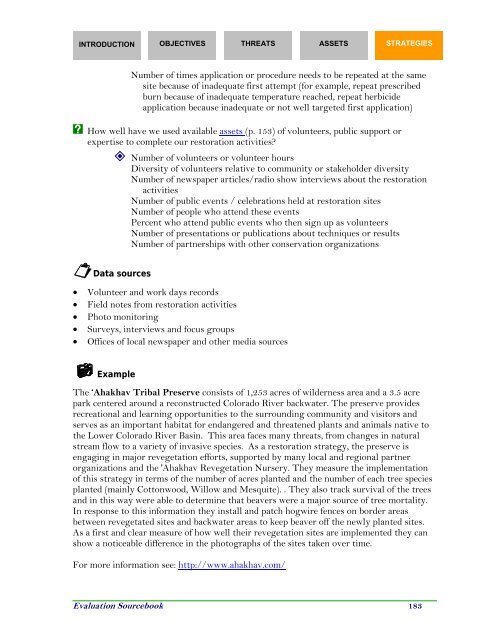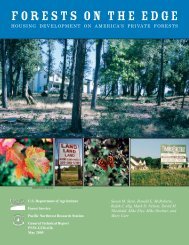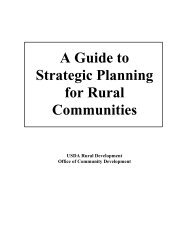Evaluation Sourcebook (.pdf) - School of Natural Resources and ...
Evaluation Sourcebook (.pdf) - School of Natural Resources and ...
Evaluation Sourcebook (.pdf) - School of Natural Resources and ...
- No tags were found...
You also want an ePaper? Increase the reach of your titles
YUMPU automatically turns print PDFs into web optimized ePapers that Google loves.
INTRODUCTION OBJECTIVES THREATS ASSETS STRATEGIESNumber <strong>of</strong> times application or procedure needs to be repeated at the samesite because <strong>of</strong> inadequate first attempt (for example, repeat prescribedburn because <strong>of</strong> inadequate temperature reached, repeat herbicideapplication because inadequate or not well targeted first application)X How well have we used available assets (p. 153) <strong>of</strong> volunteers, public support orexpertise to complete our restoration activities? Number <strong>of</strong> volunteers or volunteer hoursDiversity <strong>of</strong> volunteers relative to community or stakeholder diversityNumber <strong>of</strong> newspaper articles/radio show interviews about the restorationactivitiesNumber <strong>of</strong> public events / celebrations held at restoration sitesNumber <strong>of</strong> people who attend these eventsPercent who attend public events who then sign up as volunteersNumber <strong>of</strong> presentations or publications about techniques or resultsNumber <strong>of</strong> partnerships with other conservation organizationsData sources• Volunteer <strong>and</strong> work days records• Field notes from restoration activities• Photo monitoring• Surveys, interviews <strong>and</strong> focus groups• Offices <strong>of</strong> local newspaper <strong>and</strong> other media sourcesExampleThe ‘Ahakhav Tribal Preserve consists <strong>of</strong> 1,253 acres <strong>of</strong> wilderness area <strong>and</strong> a 3.5 acrepark centered around a reconstructed Colorado River backwater. The preserve providesrecreational <strong>and</strong> learning opportunities to the surrounding community <strong>and</strong> visitors <strong>and</strong>serves as an important habitat for endangered <strong>and</strong> threatened plants <strong>and</strong> animals native tothe Lower Colorado River Basin. This area faces many threats, from changes in naturalstream flow to a variety <strong>of</strong> invasive species. As a restoration strategy, the preserve isengaging in major revegetation efforts, supported by many local <strong>and</strong> regional partnerorganizations <strong>and</strong> the 'Ahakhav Revegetation Nursery. They measure the implementation<strong>of</strong> this strategy in terms <strong>of</strong> the number <strong>of</strong> acres planted <strong>and</strong> the number <strong>of</strong> each tree speciesplanted (mainly Cottonwood, Willow <strong>and</strong> Mesquite). . They also track survival <strong>of</strong> the trees<strong>and</strong> in this way were able to determine that beavers were a major source <strong>of</strong> tree mortality.In response to this information they install <strong>and</strong> patch hogwire fences on border areasbetween revegetated sites <strong>and</strong> backwater areas to keep beaver <strong>of</strong>f the newly planted sites.As a first <strong>and</strong> clear measure <strong>of</strong> how well their revegetation sites are implemented they canshow a noticeable difference in the photographs <strong>of</strong> the sites taken over time.For more information see: http://www.ahakhav.com/<strong>Evaluation</strong> <strong>Sourcebook</strong> 183






